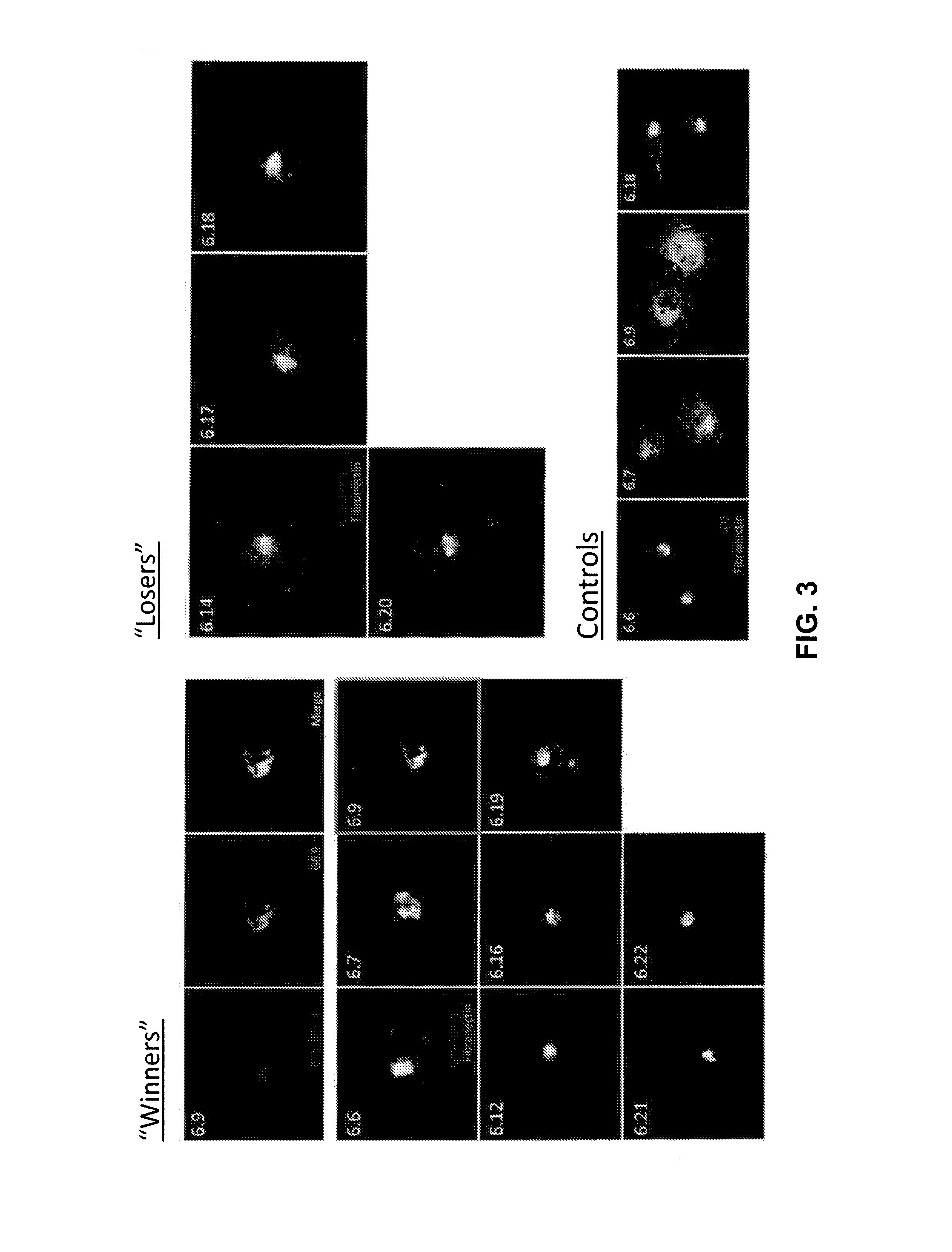Antibody and antibody mimetic for visualization and ablation of endogenous proteins
a technology of endogenous proteins and antibodies, applied in the field of compositions and methods for visualization and ablation of endogenous proteins, can solve the problems of non-physiological over-expression of protein that can alter, labor- and time-consuming knockin mouse construction, and no opportunity to label the target protein, etc., to achieve the effect of removing background nois
- Summary
- Abstract
- Description
- Claims
- Application Information
AI Technical Summary
Benefits of technology
Problems solved by technology
Method used
Image
Examples
experimental examples
Example 1
Selection of Targeting Intrabodies
[0206]Intrabodies were selected from a double-stranded DNA library encoding a protein based on the 10fnIII scaffold with random substitutions in 17 residues in the BC and FG loops (Koide A, Bailey C W, Huang X, Koide S (1998) The fibronectin type III domain as a scaffold for novel binding proteins. J Mol Biol 284:1141-1151). See illustrations in FIGS. 7 and 8. This library had a diversity of ˜1013 and copy number of ˜5.
[0207]For each round of selection the library was PCR amplified to a concentration of ˜10 ng / μl, as assayed by agarose gel electrophoresis using a small mass analytical DNA ladder. 100 nM of library DNA was then transcribed in vitro by T7 RNA polymerase for 2-4 hours at 37° C. The transcription reaction was stopped by addition of 50 mM EDTA and then phenol / chloroform extracted, desalted using a Centri-Sep™ (Applied Biosystems) column, and finally ethanol precipitated.
[0208]Afterward library RNA was resuspended in ddH2O and it...
example 2
Determination of Specificity and Efficiency of Intrabodies
[0214]This examples shows how an intrabody, or any other antibody, antibody fragment or antibody mimetic, is tested for its capability, in an intracellular environment, to (1) bind to the target protein, (2) fold correctly intracellulary, (3) not aggregate, and (4) not bind to non-target proteins.
[0215]Following mRNA display selection, Fibronectin clones from late rounds that had been selected to bind with high affinity to a target molecule were cloned into an expression plasmid that has been engineered so that a GFP tag was fused to the fibronectin upon expression. A second construct was made encoding the target domain fused with a short peptide that mediates localization to the Golgi apparatus (Andersson, A. M., et al. (1997) A retention signal necessary and sufficient for Golgi localization maps to the cytoplasmic tail of a Bunyaviridae (Uukuniemi virus) membrane glycoprotein, J Virol 71: 4717-4727).
[0216]The two plasmids ...
example 3
Labeling Endogenous Protein with an Intrabody
[0222]To generate intrabodies, mRNA display, an in vitro protein selection method previously to produce peptides and proteins that bind targets with nanomolar to picomolar affinity (Roberts R W, Szostak J W (1997) RNA-peptide fusions for the in vitro selection of peptides and proteins. Proc Natl Acad Sci USA 94:12297-12302), was used (see Example 1).
[0223]Gephyrin and PSD-95, scaffolding proteins that are localized to inhibitory and excitatory postsynaptic sites, respectively, were used as targets in two separate mRNA selection procedures (see procedure in Example 2). In both cases intrabodies that bind very tightly and specifically to the target proteins (FIG. 15). Using biochemical methods it was estimated that the Kds for both intrabodies are ˜50 μM, indicating that they bind with better affinities than the best monoclonal antibodies.
[0224]When expressed in cortical neurons in culture, each intrabody was almost perfectly colocalized wi...
PUM
| Property | Measurement | Unit |
|---|---|---|
| time | aaaaa | aaaaa |
| concentration | aaaaa | aaaaa |
| fluorescent | aaaaa | aaaaa |
Abstract
Description
Claims
Application Information
 Login to View More
Login to View More - R&D
- Intellectual Property
- Life Sciences
- Materials
- Tech Scout
- Unparalleled Data Quality
- Higher Quality Content
- 60% Fewer Hallucinations
Browse by: Latest US Patents, China's latest patents, Technical Efficacy Thesaurus, Application Domain, Technology Topic, Popular Technical Reports.
© 2025 PatSnap. All rights reserved.Legal|Privacy policy|Modern Slavery Act Transparency Statement|Sitemap|About US| Contact US: help@patsnap.com



